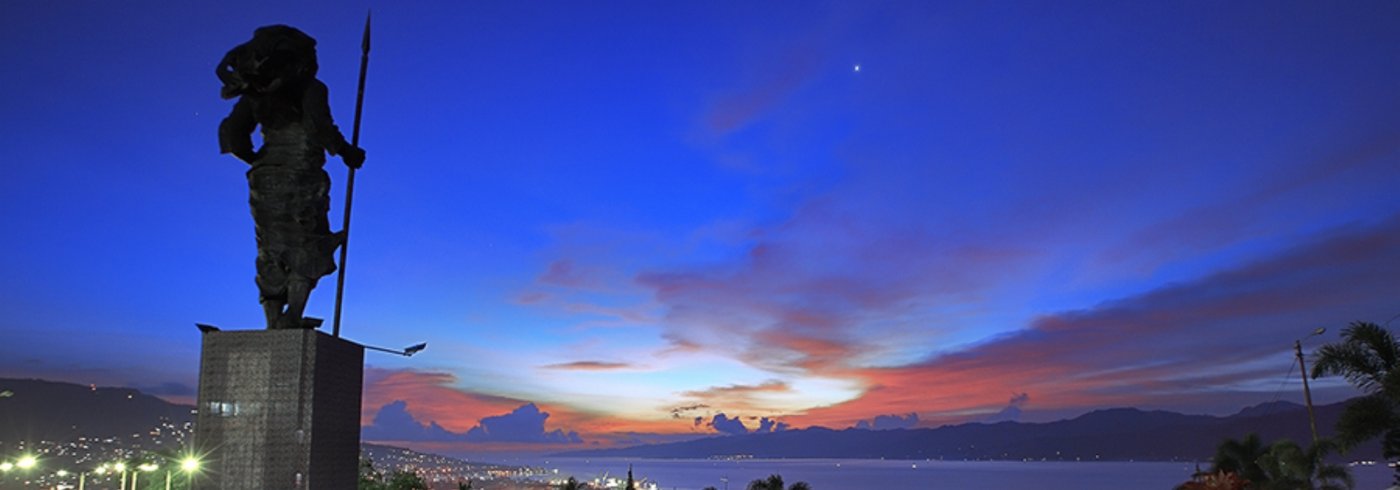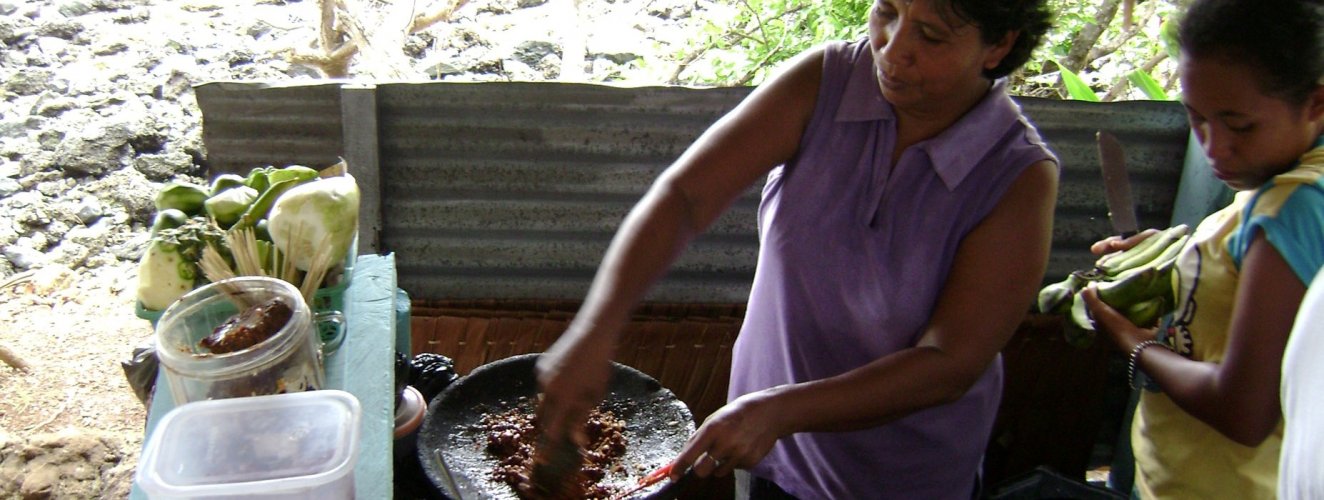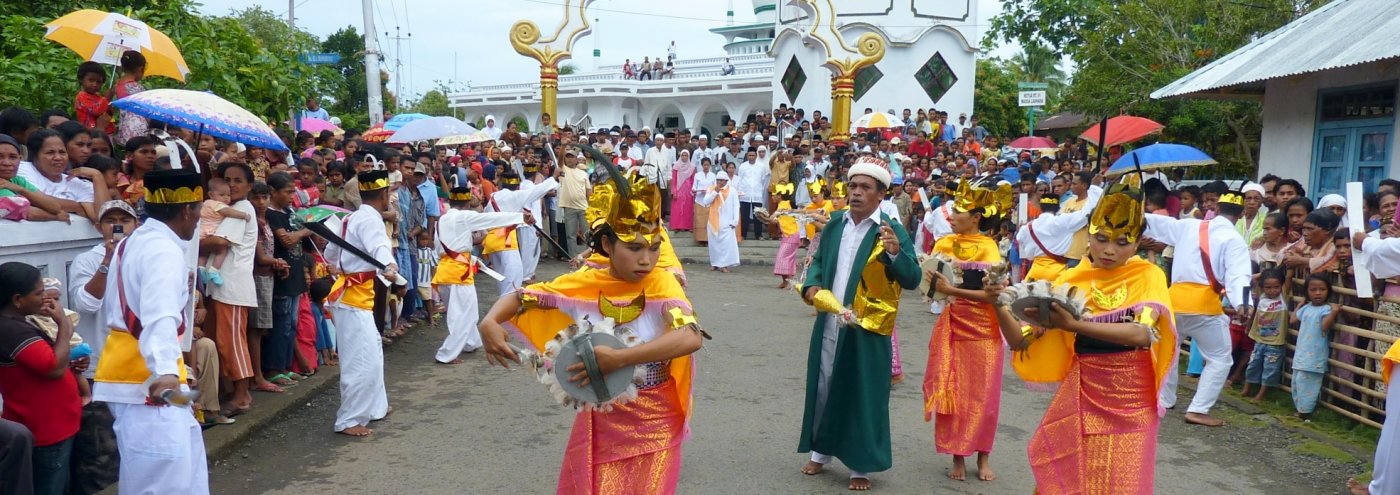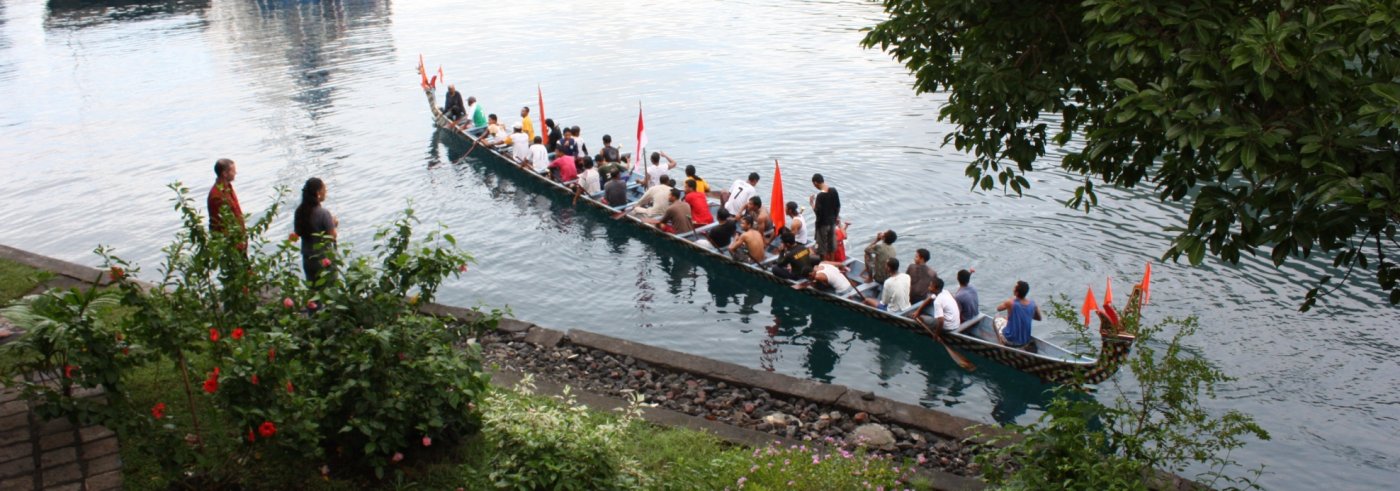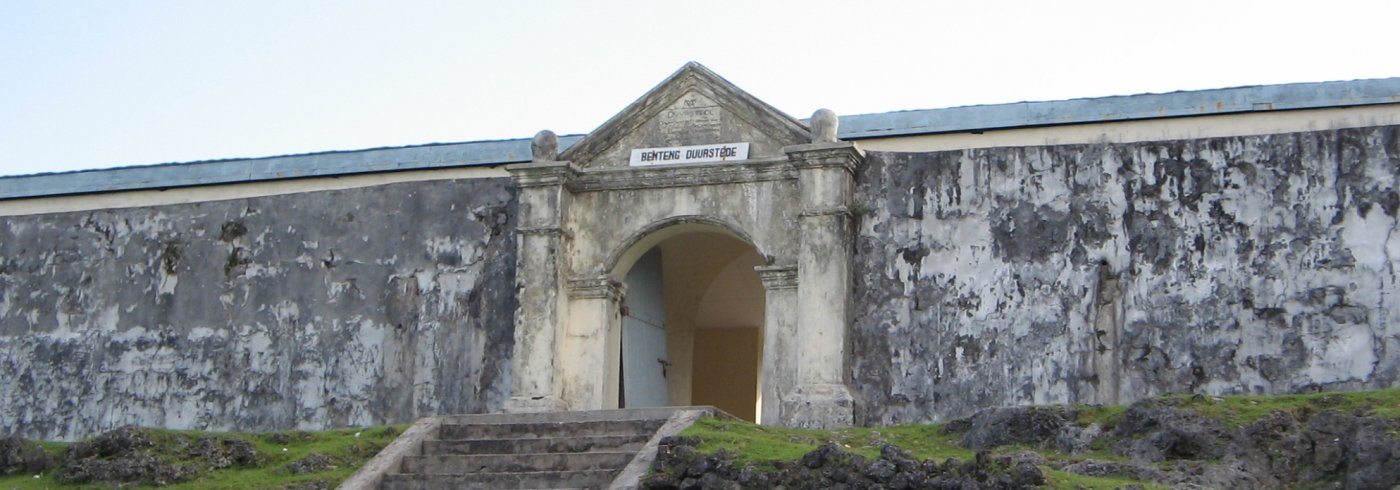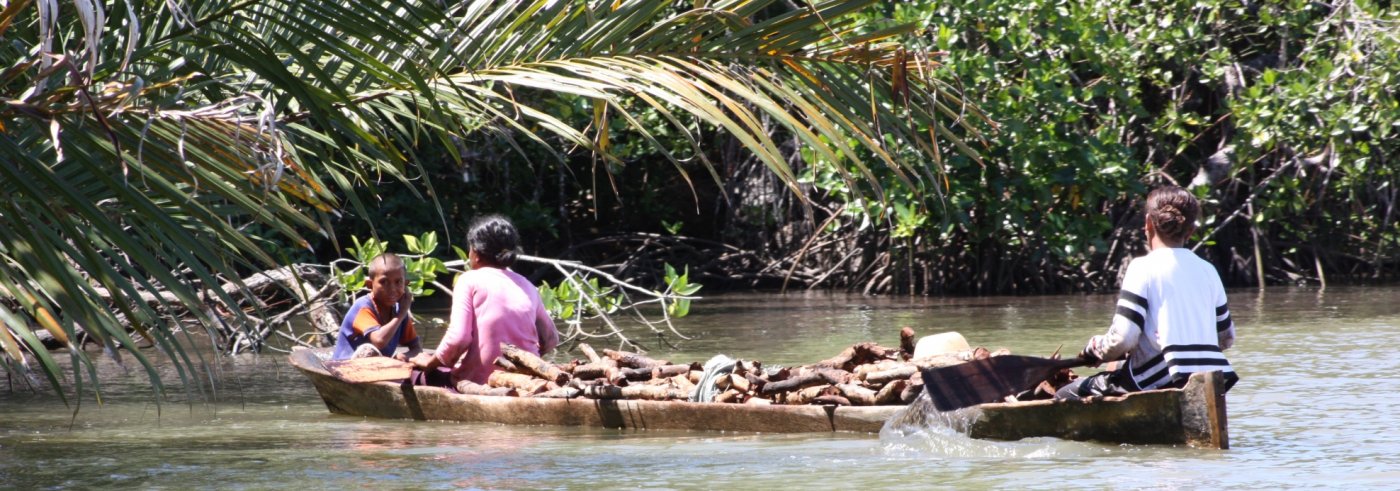Dive spots Banda archipelago
Dive information
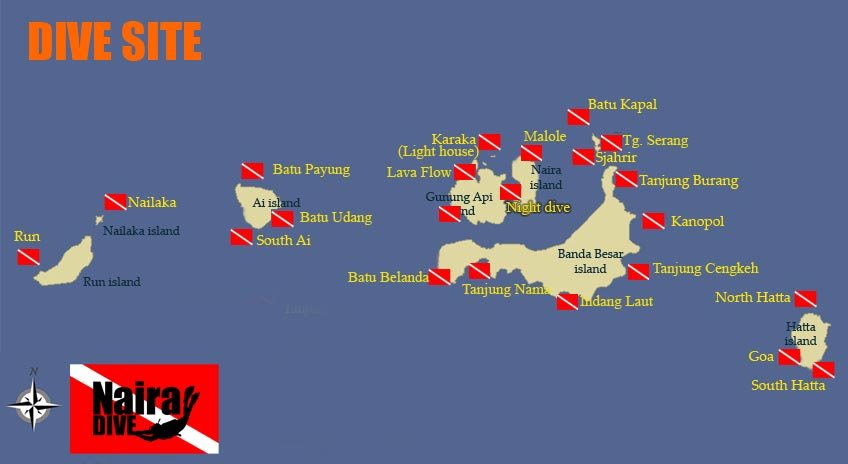 Dive Season: The best months for diving are September to early December and March to April but also the months between. October and November are the best months to spot large schools of hammerheads. The Moluccan islands have the seasons reversed from the rest of Indonesia, when they have the dry season, its rainy season in Indonesia.
Dive Season: The best months for diving are September to early December and March to April but also the months between. October and November are the best months to spot large schools of hammerheads. The Moluccan islands have the seasons reversed from the rest of Indonesia, when they have the dry season, its rainy season in Indonesia.
Visibility: Usually is good (20-30m) except some muck sites close to the harbour or where sand is easily stirred up.
Water Temperature: 20C/68F – 27C/80F
Skill Levels: Dive sites are available from beginner through advanced.
Dive Access: Land based diving, boat diving and shore diving. Many live-aboard start and end their itinerary in Ambon. Good option to add land based diving at the beginning or ending end of you live-aboard trip.
Mandarin city
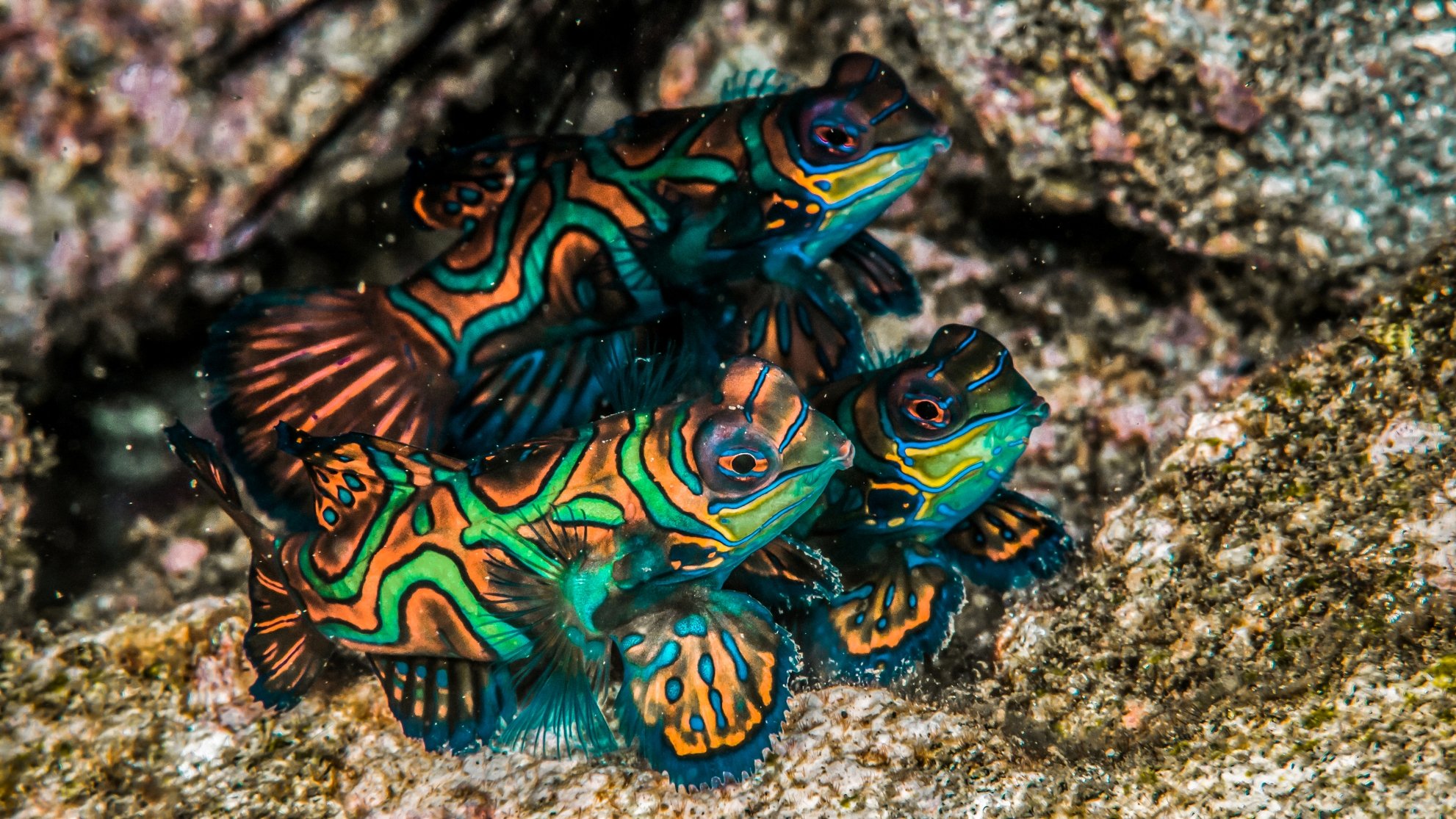 Just in front of Hotel Maulana , you find a dive site that we call Mandarin city because it is nearly impossible to miss the colourful Mandarin fish living here. If you go for a sunset dive the chances are great you become witness of their daily mating activities. In the vicinity of the Mandarin fish’s home is the main pier of Banda Neira. It is overgrown with ascidians, sponges and soft corals and hosts juvenile batfish, crocodile fish, a variety of different scorpion fishes, hundreds of pipefish, large moray eels, and so on. There is still so much to discover that it is always worth getting a tank and jumping in directly in front of the dive center.
Just in front of Hotel Maulana , you find a dive site that we call Mandarin city because it is nearly impossible to miss the colourful Mandarin fish living here. If you go for a sunset dive the chances are great you become witness of their daily mating activities. In the vicinity of the Mandarin fish’s home is the main pier of Banda Neira. It is overgrown with ascidians, sponges and soft corals and hosts juvenile batfish, crocodile fish, a variety of different scorpion fishes, hundreds of pipefish, large moray eels, and so on. There is still so much to discover that it is always worth getting a tank and jumping in directly in front of the dive center.Pulau Pisang
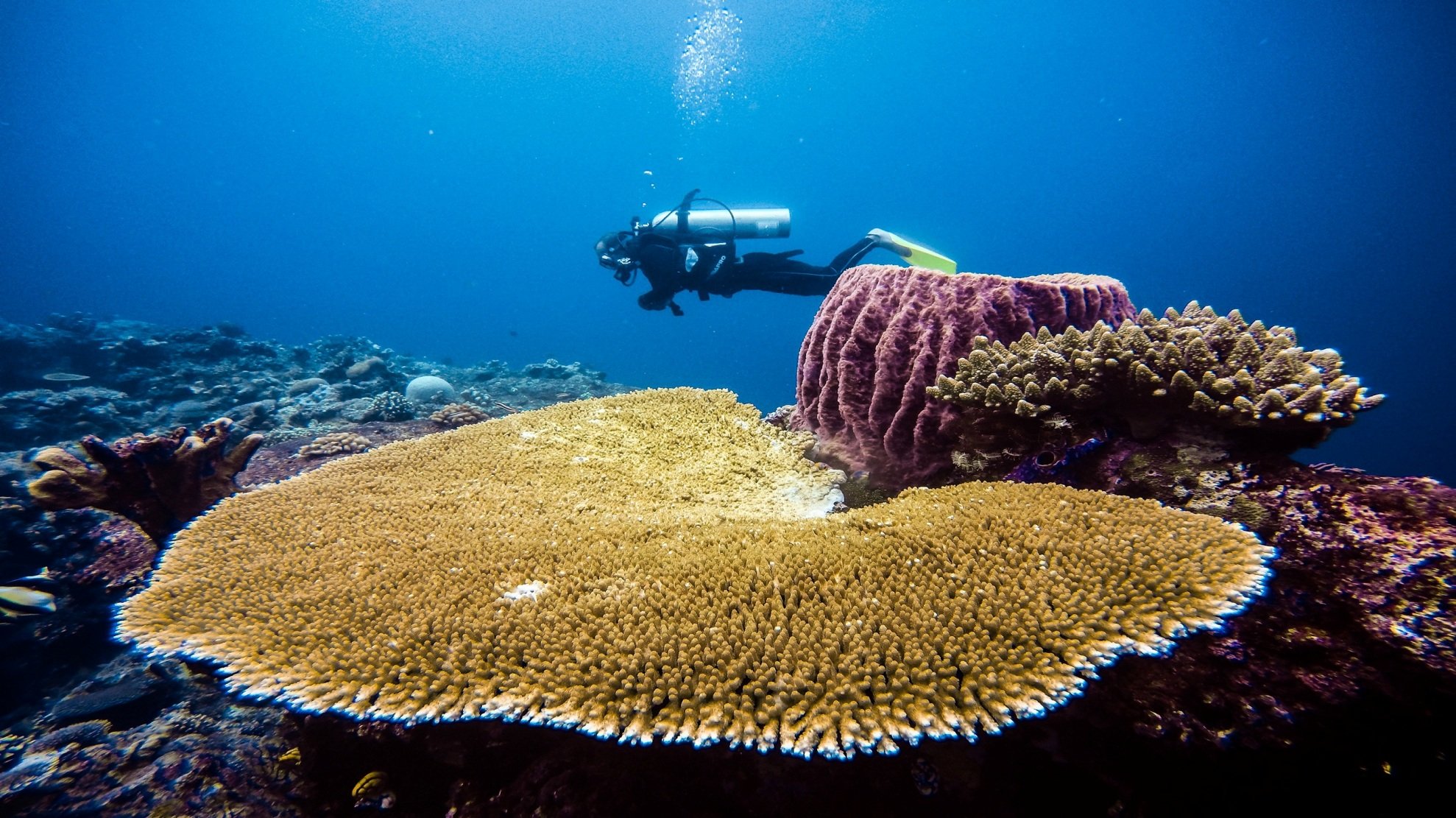 “ Pulau Pisang, the “Banana island” is just a 20 min boat ride from Banda Neira and is surrounded by healthy and species-rich coral reefs that are home to a larger number of colourful reef fish such as Butterfly-, Surgeon-, Trigger-, Parrot- and Angelfish. The reefs are also considerd to be part of Banda’s top spawning grounds. The reef slopes are all ending in a wall going down to 25-50m, which is covered with Gorgonians, sponges, anemones, whip corals, and so on. The dives here are usually moderate drift dives with strong currents only at the most northern and southern tips of the island.
“ Pulau Pisang, the “Banana island” is just a 20 min boat ride from Banda Neira and is surrounded by healthy and species-rich coral reefs that are home to a larger number of colourful reef fish such as Butterfly-, Surgeon-, Trigger-, Parrot- and Angelfish. The reefs are also considerd to be part of Banda’s top spawning grounds. The reef slopes are all ending in a wall going down to 25-50m, which is covered with Gorgonians, sponges, anemones, whip corals, and so on. The dives here are usually moderate drift dives with strong currents only at the most northern and southern tips of the island.Banda Besar
 Banda Besar offers a number of beautiful coral dive sites with hard coral reefs usually ending in a soft coral-, sea fan- and barrel sponge- covered wall. Along the southern coast aggregations of fish such as rainbow runners and redtooth triggers can be found. Napoleons are also frequently encountered at most of the dives sites. Some dive sites to be mentioned here are Karnopol, Tanjung Cengke, Batu Belanda and Pohon Miring. Apart from its beautiful wall and its large cave that can be discovered at a depth of 10 meters, Batu Belanda is famous for some eagle rays that are often “flying by”. Pohon miring, on the northern tip of Banda Besar impresses with its picturesque rock structure as a colourful and large swim-through can be found here. Pohon miring is also a point where the currents from the southern and northern site of the island meet, which attracts a lot of fish.
Banda Besar offers a number of beautiful coral dive sites with hard coral reefs usually ending in a soft coral-, sea fan- and barrel sponge- covered wall. Along the southern coast aggregations of fish such as rainbow runners and redtooth triggers can be found. Napoleons are also frequently encountered at most of the dives sites. Some dive sites to be mentioned here are Karnopol, Tanjung Cengke, Batu Belanda and Pohon Miring. Apart from its beautiful wall and its large cave that can be discovered at a depth of 10 meters, Batu Belanda is famous for some eagle rays that are often “flying by”. Pohon miring, on the northern tip of Banda Besar impresses with its picturesque rock structure as a colourful and large swim-through can be found here. Pohon miring is also a point where the currents from the southern and northern site of the island meet, which attracts a lot of fish.
The Lava flow in the north of Gunung Api is probably one of Banda’s most extraordinary dive sites. After the volcano erupted in 1988, the gravel on the bottom of this dive site was covered with lava. Very soon, corals (mostly Acropora) started to grow on the cold lava and since then have formed a huge coral reef with nearly 100% hard coral cover. Why corals were able to grow so quickly is still not totally clear but the surface structure of the lava seems to play an important role. This dive site demonstrates very well how succession in a coral reef can take place. It is not only interesting for coral experts but is also a must for every diver who is visiting the Banda islands.
Batu Kapal
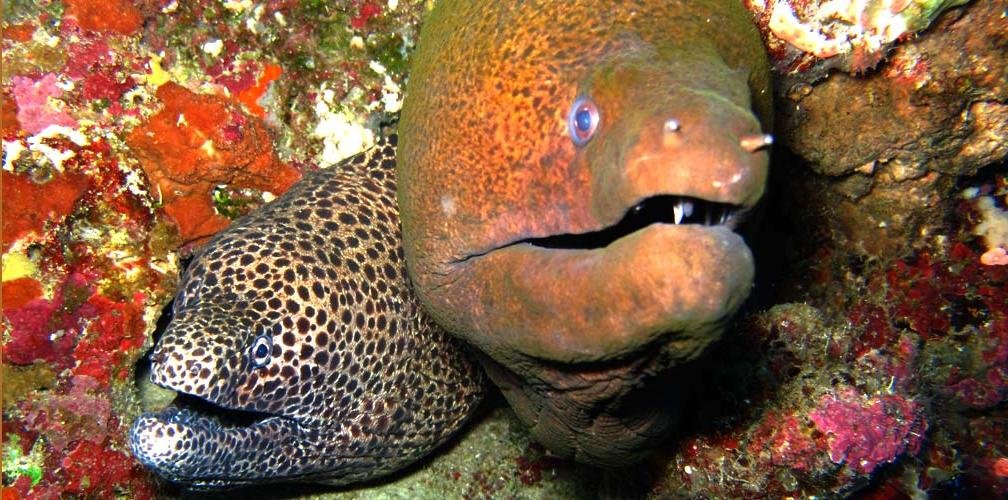 The dive sites of Batu Kapal belong to our personal favourites. Batu Kapal is a rock sticking out of the water north of Pulau Pisang. Below the surface, deeper rocks and boulders can be found. The largest of them is located west of the main rock. It starts on 8m and its peak can easily be seen from the surface. It is connected to the next deeper rock northwards. Both are forming a valley in between them and both are going down to more than 50m. Huge gorgonias and barrel sponges grow on the walls, hosting big Moray eels and the biggest population of red tooth trigger fish we have ever seen. The eastern side of Batu Kapal forms a channel with some boulders. The wall of the channel is colourful and rich in fish and invertebrate species. For example, 4 differently coloured scorpion leaf fish have already been found on the dive site. The safety stop area close to the main rock is also an eye catcher as most of its boulders are covered in bright orange soft corals.
The dive sites of Batu Kapal belong to our personal favourites. Batu Kapal is a rock sticking out of the water north of Pulau Pisang. Below the surface, deeper rocks and boulders can be found. The largest of them is located west of the main rock. It starts on 8m and its peak can easily be seen from the surface. It is connected to the next deeper rock northwards. Both are forming a valley in between them and both are going down to more than 50m. Huge gorgonias and barrel sponges grow on the walls, hosting big Moray eels and the biggest population of red tooth trigger fish we have ever seen. The eastern side of Batu Kapal forms a channel with some boulders. The wall of the channel is colourful and rich in fish and invertebrate species. For example, 4 differently coloured scorpion leaf fish have already been found on the dive site. The safety stop area close to the main rock is also an eye catcher as most of its boulders are covered in bright orange soft corals.
In general, Batu Kapal stands out because of the amazing visibility that often reaches 40-50 m. This is also the place with a chance to see larger pelagic fish. However, Batu Kapal is also known for its strong changing currents that make diving impossible some times of the day.
Quite a few things make this place one of the top dive sites in Banda. A steep slope covered with coral, a straight and spacious 15-meter long swim-through full of gorgonias that exits next to a beautiful wall covered with sea fans and huge sponges, a rocky plateau full of small critters where big Napoleons and other fish like to play with the current and an amazing visibility that makes it a perfect package for divers who enjoy the current.
Lava Flow
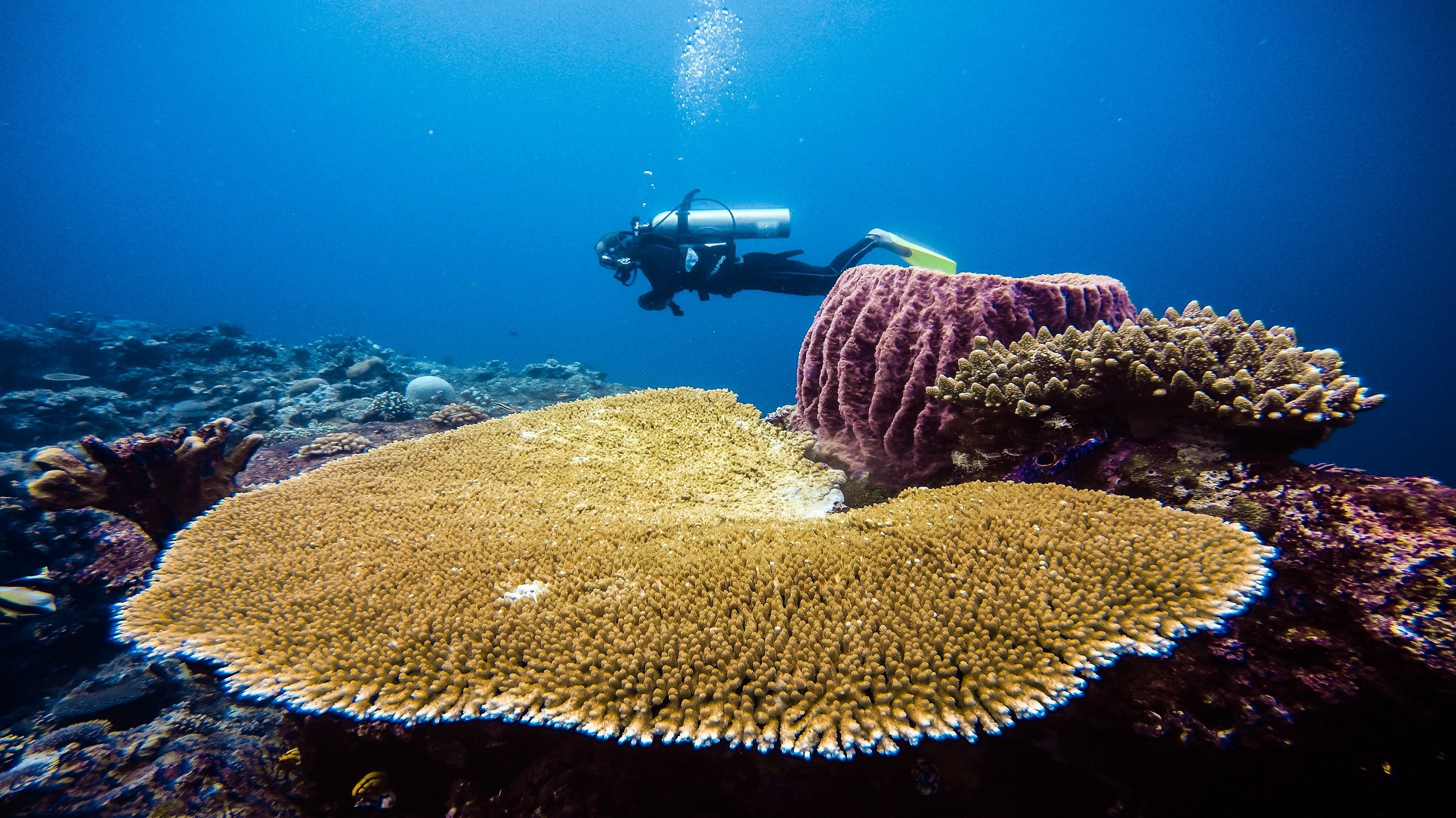 Deze bijzondere duik- en snorkellocatie ligt aan de noordkant van de vulkaan Pulau Hatta, op ongeveer 25 minuten varen vanaf Banda Neira.
Deze bijzondere duik- en snorkellocatie ligt aan de noordkant van de vulkaan Pulau Hatta, op ongeveer 25 minuten varen vanaf Banda Neira.
De laatste uitbarsting van de vulkaan, in 1988, veroorzaakte een lavastroom tot in de zee. De temperatuur van het water is daardoor sterk gestegen, hetgeen grote invloed heeft op de onderwater flora en fauna.
In het ondiepe gedeelte floreert het koraal, iets dieper kun je Fusiiers, Parrotfish en zwarte Triggerfish spotten. In het diepe gedeelte, rond de 20-25 meter vind je Napoleon Wrasse, Batfish en met wat geluk de Mobula Rays...
Hatta island
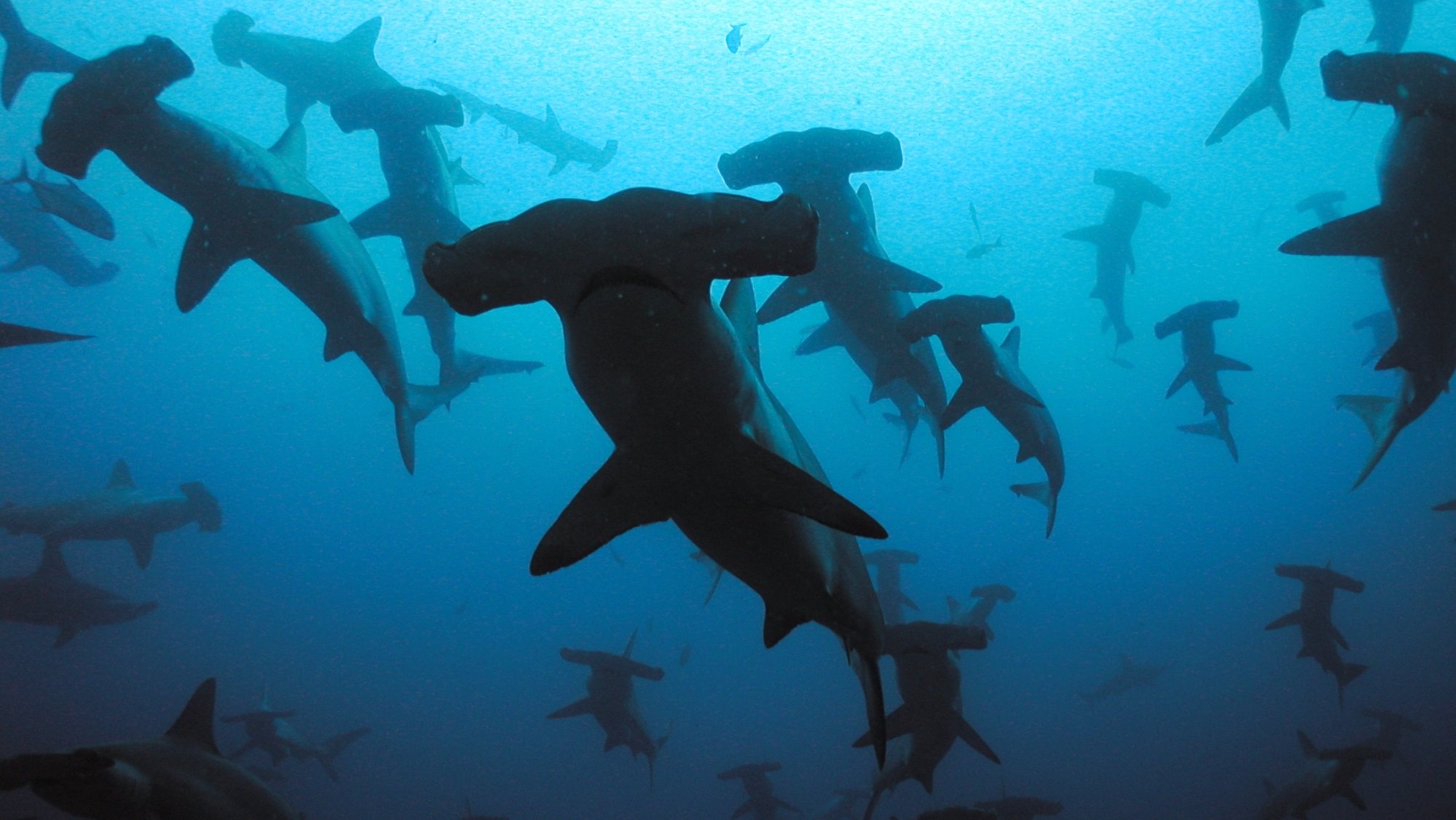 25 km from Banda Neira. Skaru Atoll, is the name of a coral, few hundred yards south of the island, there are some colonies of unicorn fish, Fusiliers, jacks fish and rainbow runners, white-tip sharks measuring almost two meters, napoleon wrasse, dogtoothed tuna, and turtles.
25 km from Banda Neira. Skaru Atoll, is the name of a coral, few hundred yards south of the island, there are some colonies of unicorn fish, Fusiliers, jacks fish and rainbow runners, white-tip sharks measuring almost two meters, napoleon wrasse, dogtoothed tuna, and turtles.
Pulau Hatta is known for its great snorkelling sites but it is even better for diving. In front of Hatta’s west shore beach, a 5 m wide hole in the reef top opens up to the open sea. You can dive down through it and will then find yourself looking back to what looks like a bridge on the coral reef. The bridge is covered with soft corals of all colours and underneath it, large Gorgonians that shelter a couple of Pigmy seahorses. You can continue the dive as a relaxed drift along the wall, one of Banda’s most diverse sites in terms of reef fish, shrimps, molluscs and corals. Sea turtle encounters are also quite frequent in Hatta.
Hatta’s other dive sites are similar to the wall of Hatta bridge. Fish and coral diversity is great everywhere, including schooling barracudas, batfish, Napoleon wrasses and much more.
Karang Hatta is a reef located South East of Pulau Hatta. Its dive sites are the nearest sites to the 6000m deep Banda trench, which makes diving interesting as the chances to see big pelagics are the best here. Schooling trevallies, barracudas, tunas and even chances to see bigger sharks (hammerheads and grey reef sharks), as well as many turtles can be seen around this underwater mountain. The reef surface had been bombed years ago but is showing good signs of recovery already.
Pulau Ai
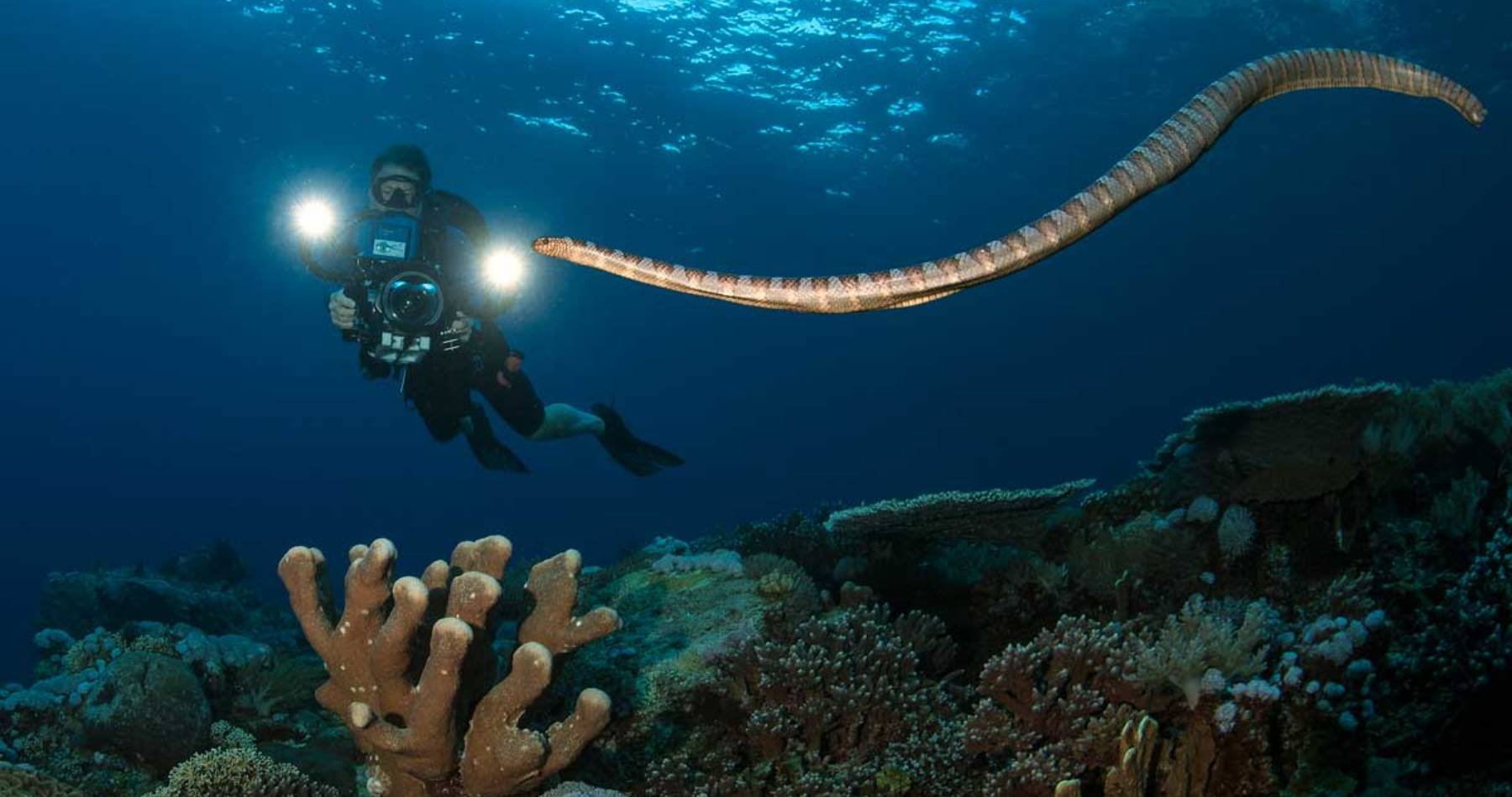 Ai Island: north and south-west coast surrounded by beautiful reef wall, full of caves also the habitat for fish in the harbours. Just as Pulau Hatta, Ai offers some of Banda’s best reefs. The northern sites of the island, for example the dive site Batu Payung (= Umbrella rock), have a rather steep wall with lots of cracks and overhangs whereas the southern reef areas are sloping down to the sandy bottom at 40-50m. In the south of Ai, occasionally Hammerhead sharks have been spotted, giving this dive site its name “Hammerhead point”. Napoleons and turtles can also often be seen here.
Ai Island: north and south-west coast surrounded by beautiful reef wall, full of caves also the habitat for fish in the harbours. Just as Pulau Hatta, Ai offers some of Banda’s best reefs. The northern sites of the island, for example the dive site Batu Payung (= Umbrella rock), have a rather steep wall with lots of cracks and overhangs whereas the southern reef areas are sloping down to the sandy bottom at 40-50m. In the south of Ai, occasionally Hammerhead sharks have been spotted, giving this dive site its name “Hammerhead point”. Napoleons and turtles can also often be seen here.Karaka Island
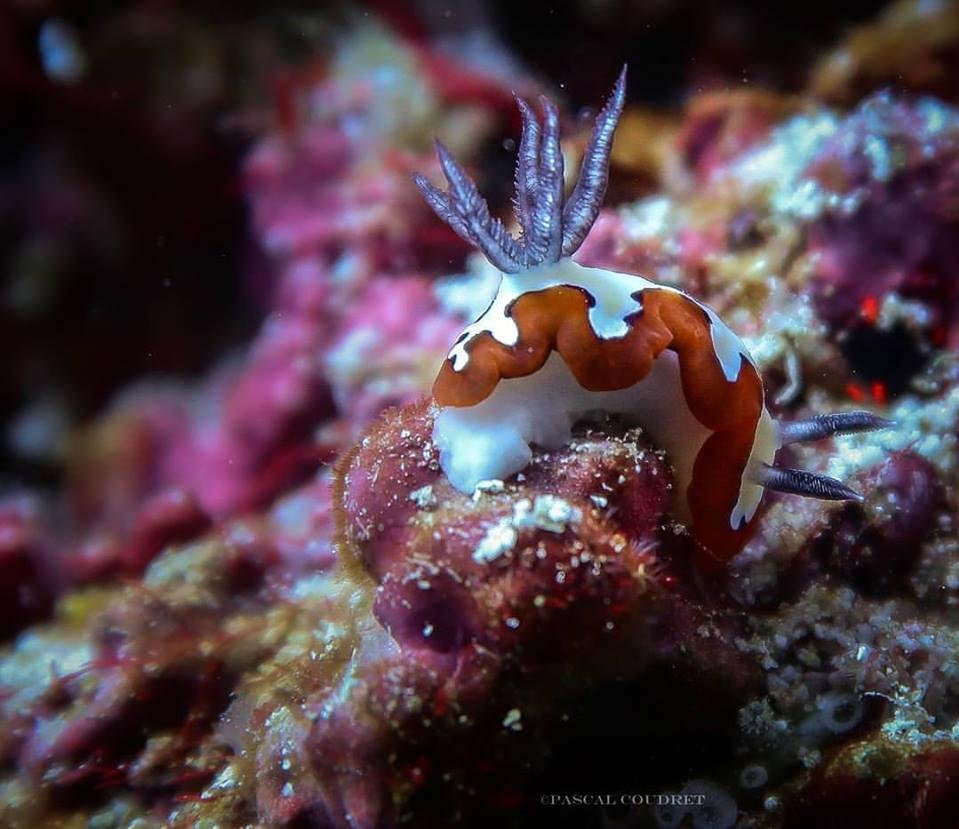 Karaka Island of Crab Island ligt op korte afstand van Gunung Api. Het noordkuststrand is perfect voor een picknick. Pulau Keraka, ook bekend als Lighthouse, biedt een zeer interessante diversiteit aan zeeleven. Stromingen zijn hier zelden sterk, waardoor het een zeer makkelijke site is om te duiken en foto's te maken. De mix van rotswanden, koraalblokken op een zandbodem en een rijke riftop biedt een verbazingwekkende verscheidenheid aan kleine beestjes zoals snoepkrabben, naaktslakken, Ornate Buikbek-vissen, Bladschorpioen-vissen en nog veel meer, waardoor deze site de favoriet van een macrofotograaf is, voor zowel overdag als 's nachts duiken. En als het je lukt om je blik van de kleine beestjes af te wenden, zul je ook Giant Moray Eels, Great Barracuda's in het blauw zien zwemmen, Napoleon Wrasses, schildpadden en nog veel meer.
Karaka Island of Crab Island ligt op korte afstand van Gunung Api. Het noordkuststrand is perfect voor een picknick. Pulau Keraka, ook bekend als Lighthouse, biedt een zeer interessante diversiteit aan zeeleven. Stromingen zijn hier zelden sterk, waardoor het een zeer makkelijke site is om te duiken en foto's te maken. De mix van rotswanden, koraalblokken op een zandbodem en een rijke riftop biedt een verbazingwekkende verscheidenheid aan kleine beestjes zoals snoepkrabben, naaktslakken, Ornate Buikbek-vissen, Bladschorpioen-vissen en nog veel meer, waardoor deze site de favoriet van een macrofotograaf is, voor zowel overdag als 's nachts duiken. En als het je lukt om je blik van de kleine beestjes af te wenden, zul je ook Giant Moray Eels, Great Barracuda's in het blauw zien zwemmen, Napoleon Wrasses, schildpadden en nog veel meer.
Pulau Rhun
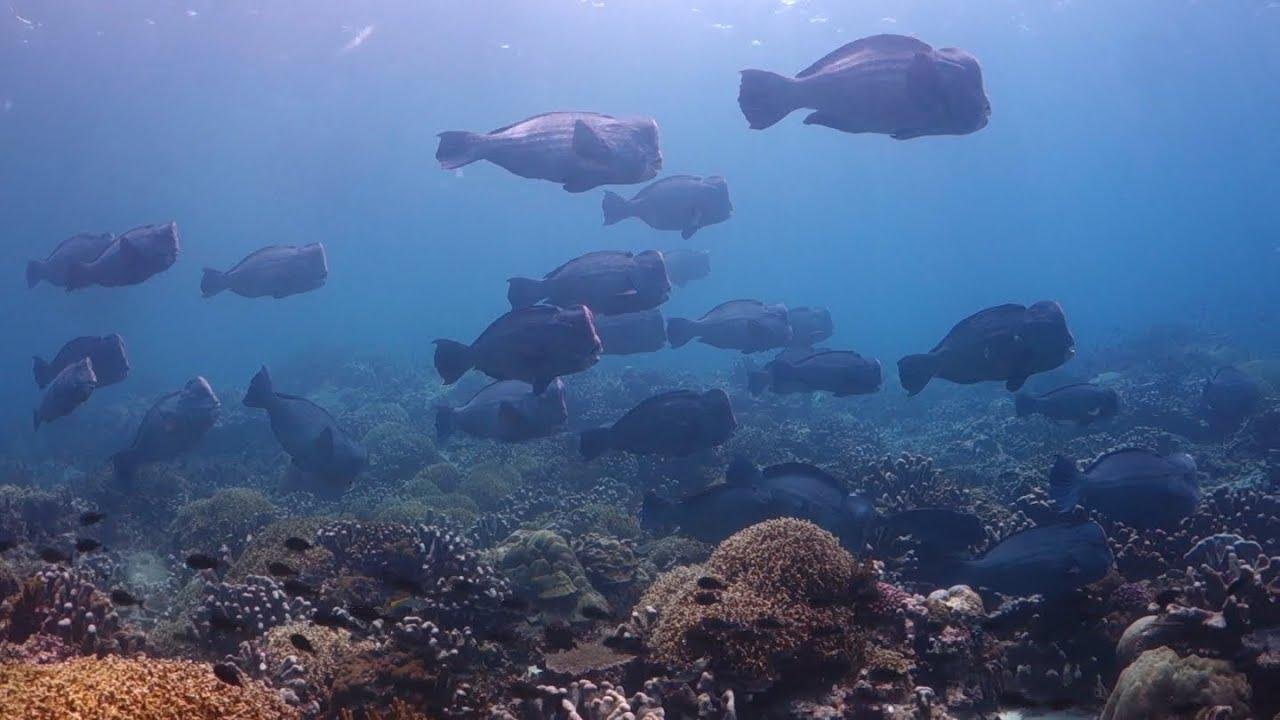 Thanks to its remoteness, Rhun and the little island of Nailaka offer outstanding reefs and large amounts of fish. After putting your head under water and having had lunch on the beautiful white beaches of Nailaka you will definitely have forgotten the 2 hour boat ride it takes to get there.
Thanks to its remoteness, Rhun and the little island of Nailaka offer outstanding reefs and large amounts of fish. After putting your head under water and having had lunch on the beautiful white beaches of Nailaka you will definitely have forgotten the 2 hour boat ride it takes to get there.
